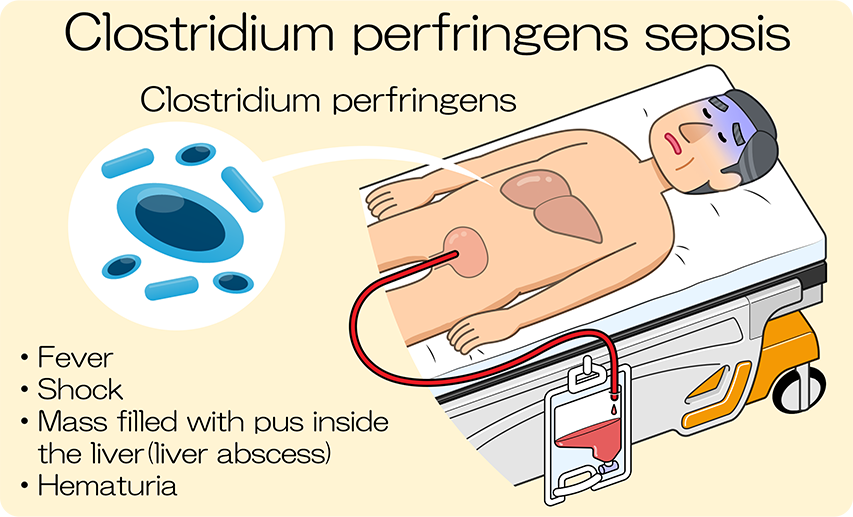In recent years, the frequency of the classic so-called gas gangrene with necrosis of muscles with gas in the extremities caused by Clostridium spp. has decreased. On the other hand, the frequency of gas gangrene caused by non-Clostridium species has increased in association with an aging population and comorbidities such as diabetes mellitus. Therefore, the frequency of use for the treatment of gas gangrene in traumatic wound infections produced primarily against Clostridiumperfringens (C. perfringens Type A, C. septicum, C. oedematiens) has decreased.

Unlike classical gas gangrene, sepsis, including liver abscesses caused by endogenous C. perfringens, is on the rise. Van Bunderen et al. reported a series of cases of C. perfringens septicemia resulting in intravascular hemolysis, severe anemia, DIC, and multiple organ damage leading to death within hours, with a mortality rate of The report states that the rate exceeds 80%. Although antimicrobials and drainage of infected lesions are the mainstay of treatment, the administration of gas gangrene antivenom against C. perfringens is beginning to be considered in addition to these treatments because of its pathogenesis. Currently, there is no established evidence.